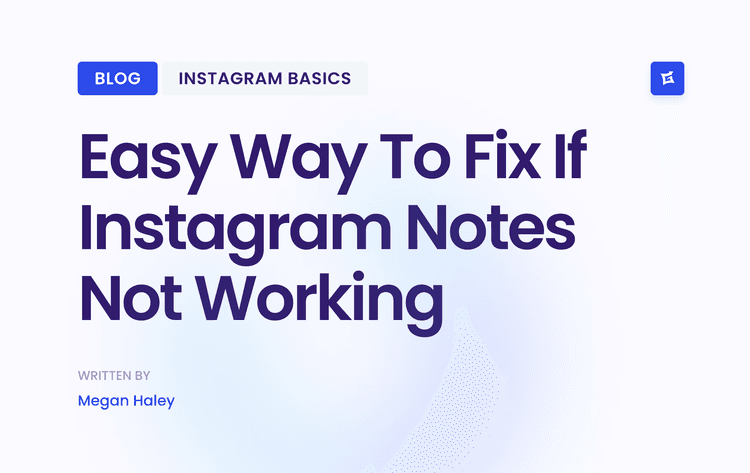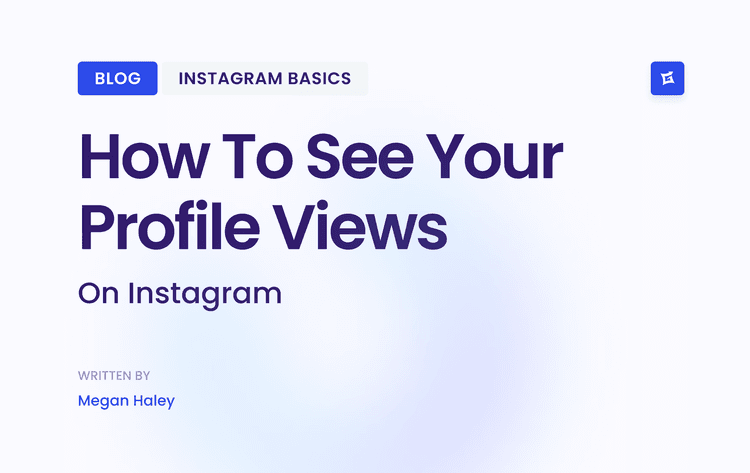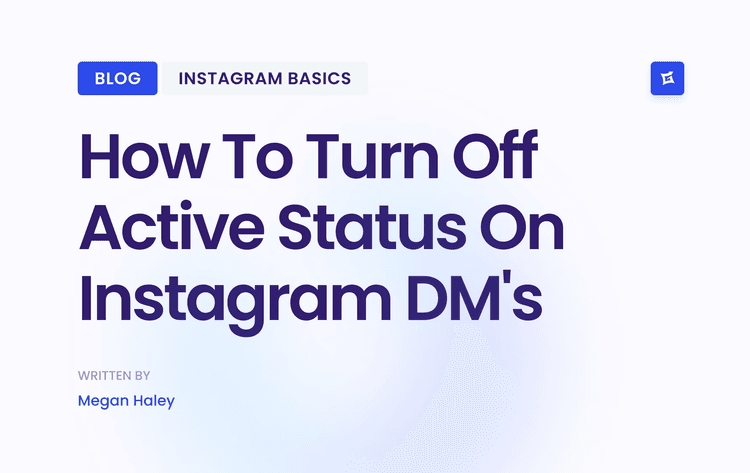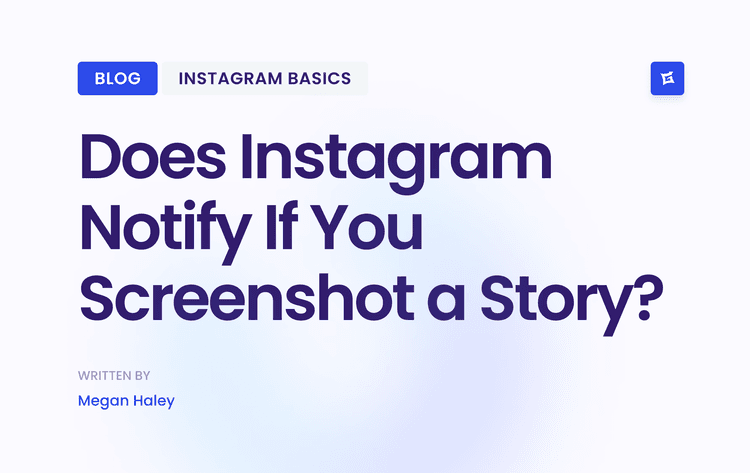Why Trending Hashtags Renew Your Instagram Success
Why Hashtag Relevance Matters More Than Ever
Understanding how people use hashtags is key to unlocking their potential. When a user searches for a specific hashtag, Instagram displays the most recent and relevant content using that tag. This means that using relevant, trending hashtags significantly increases the chance of your content appearing in search results, exposing it to a broader audience. Think of hashtags like keywords – they categorize your content and make it searchable. This is particularly important for accounts looking to expand their organic reach.
For example, imagine you manage a food blog and post a picture of a delicious vegan lasagna. Using generic, high-volume hashtags like #food or #instafood might get your post some initial views, but it will quickly get lost in the sheer volume of other posts. However, combining those general tags with more specific, trending hashtags like #veganlasagna, #veganrecipes, or #plantbasedmeals allows you to reach an audience actively seeking that type of content. This targeted approach connects you with users genuinely interested in your posts.
Furthermore, the sheer volume of hashtag usage underscores their importance. The hashtag #love has been used over 2.1 billion times globally, demonstrating the enormous scale of hashtag engagement. Popular tags like #instagood and #fashion also boast billions of uses, illustrating the potential reach. This widespread use highlights why choosing the right trending hashtags is crucial for enhancing content visibility in a competitive online environment. Learn more about hashtag statistics here: https://www.searchlogistics.com/learn/statistics/hashtags-statistics/
Leveraging Trends for Increased Visibility
Having a strong hashtag strategy is essential. Learn more with our Instagram hashtag strategy guide. Targeting trending hashtags isn't just about reaching a larger audience; it's about reaching the right audience. By tapping into current trends, you align your content with what people are actively looking for, increasing the likelihood of engagement and follower growth.
However, finding trending hashtags requires more than simply picking popular tags. You need to understand which hashtags are truly trending within your specific niche. This involves analyzing your target audience, researching competitor strategies, and using tools to monitor hashtag performance. By staying ahead of the curve and identifying emerging trends, you can position your content for maximum visibility and impact. This strategic approach is more effective than simply using the most popular hashtags. Focus on finding relevant trending hashtags that connect you with an engaged audience.
Top 5 Methods to Find Trending Hashtags That Work
Finding the right hashtags on Instagram can significantly impact your visibility and reach. While using popular hashtags might seem tempting, a strategic approach focusing on trending and relevant hashtags is essential for genuine growth. This involves identifying hashtags actively used by your target audience. Let's explore five effective methods to discover these valuable hashtags.
1. Explore the Instagram Explore Page
Instagram's Explore page is a treasure trove of trending hashtags. Personalized to your interests, it showcases content related to accounts you follow and posts you've engaged with. Begin by searching for keywords relevant to your niche. Observe the hashtags used in the top-performing posts. These are often trending hashtags within your specific area.
Also, pay attention to the "Related Hashtags" section, which offers further suggestions. This feature is excellent for uncovering hidden gems and expanding your hashtag repertoire. It can provide you with valuable insights into what's currently resonating with your target demographic.
2. Analyze Your Competitors
Monitoring your competitors is a wise strategy for uncovering effective hashtags. Identify successful accounts in your niche and analyze the hashtags they use. Look for patterns and identify hashtags consistently appearing in their top posts.
Don't just copy their strategy wholesale. Instead, use their hashtag choices as inspiration and tailor them to your content. This allows you to learn from their success while maintaining your unique brand identity.
3. Use Hashtag Research Tools
Several tools are designed specifically for hashtag research. These tools help identify trending hashtags, analyze their performance, and track their popularity over time. Popular options include Hashtagify, RiteTag, and Flick.
These tools offer features like hashtag suggestions, competition analysis, and performance tracking. While some require a subscription, many offer free versions with basic functionality. Even free versions can provide valuable insights to improve your hashtag strategy.
4. Monitor Related Hashtags Within Instagram
After identifying a few relevant hashtags, use Instagram itself to explore related tags. When you search for a hashtag, Instagram suggests related tags often trending within the same niche. This is a powerful way to expand your hashtag list and discover new options.
For example, if you use #healthyrecipes, Instagram might suggest related tags like #cleaneating or #mealprep. This interconnected web of hashtags helps you discover trending topics and connect with a wider audience.
5. Track Hashtag Performance
Finding trending hashtags is just the first step. You also need to track their performance and see how they impact your reach and engagement. Instagram Insights provides valuable data on your post performance, including reach, impressions, and engagement metrics.
This data-driven approach helps you refine your hashtag strategy and focus on the tags delivering the best results. By analyzing this data, you can identify which hashtags are most effective in driving traffic and engagement to your posts.
To better understand the impact of using relevant hashtags, take a look at the infographic below.
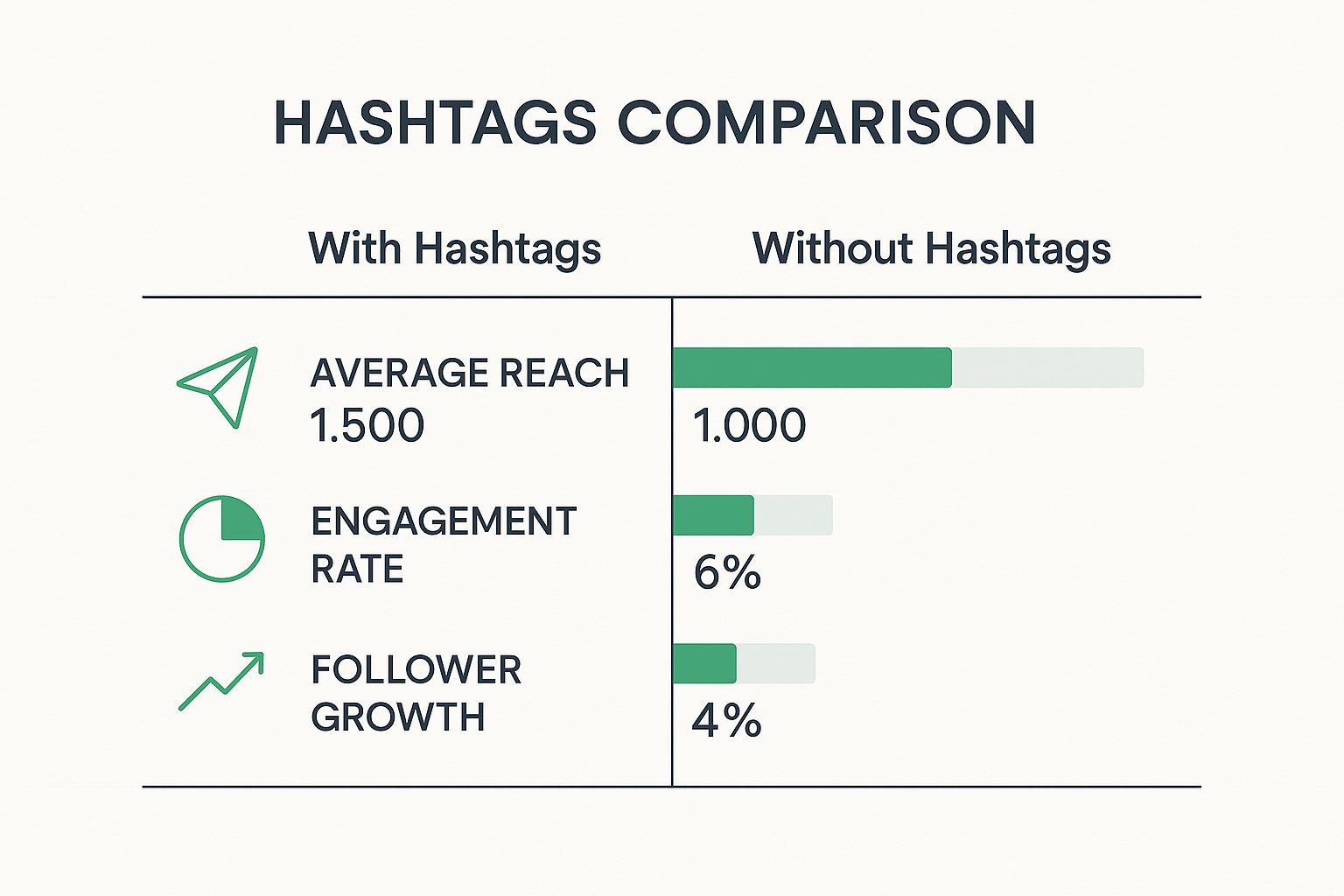
The infographic highlights the impact of relevant hashtags on reach, engagement, and follower growth. Posts with relevant hashtags see double the reach (1500 vs. 1000), a higher engagement rate (6% vs. 3%), and improved follower growth (4% vs. 2%). This emphasizes the importance of a strong hashtag strategy for maximizing your content’s visibility and impact on Instagram. By implementing these five methods, you can discover trending hashtags that resonate with your audience and drive results. This targeted approach ensures you're not just reaching a larger audience but connecting with users genuinely interested in your content.
Let’s take a deeper look at how each hashtag research method can be applied and what limitations you might encounter.
To make your hashtag research process more efficient, we’ve prepared a comparison table outlining each method’s pros and cons.
Comparison of Hashtag Research Methods
Instagram Explore Page: Highly effective and time-efficient for initial hashtag discovery and trend monitoring. However, it may be influenced by your existing activity and might not surface niche hashtags. Best for staying updated on broad trends.
Competitor Analysis: Offers medium effectiveness and requires moderate time investment. Useful for identifying relevant hashtags within your niche, but be cautious—selecting the wrong competitors could lead to copying ineffective strategies.
Hashtag Research Tools: Highly effective with low to medium time commitment. Ideal for in-depth analysis and performance tracking, though some tools are paid, and data accuracy isn’t always guaranteed.
Monitoring Related Hashtags Within Instagram: Medium effectiveness with low time investment. Helps expand your hashtag lists and discover niche options, but you’ll need a starting point, and some suggestions may be irrelevant.
Tracking Hashtag Performance: Highly effective but requires a medium time investment. Essential for refining your strategy and optimizing reach and engagement, though it demands consistent monitoring and analysis for best results.
This information summarizes the key differences and similarities between each method, helping you choose the best approach based on your needs and resources. By combining these methods, you can develop a comprehensive hashtag strategy that significantly boosts your visibility and engagement on Instagram.
The Strategic Shift From Popular To Niche Hashtags
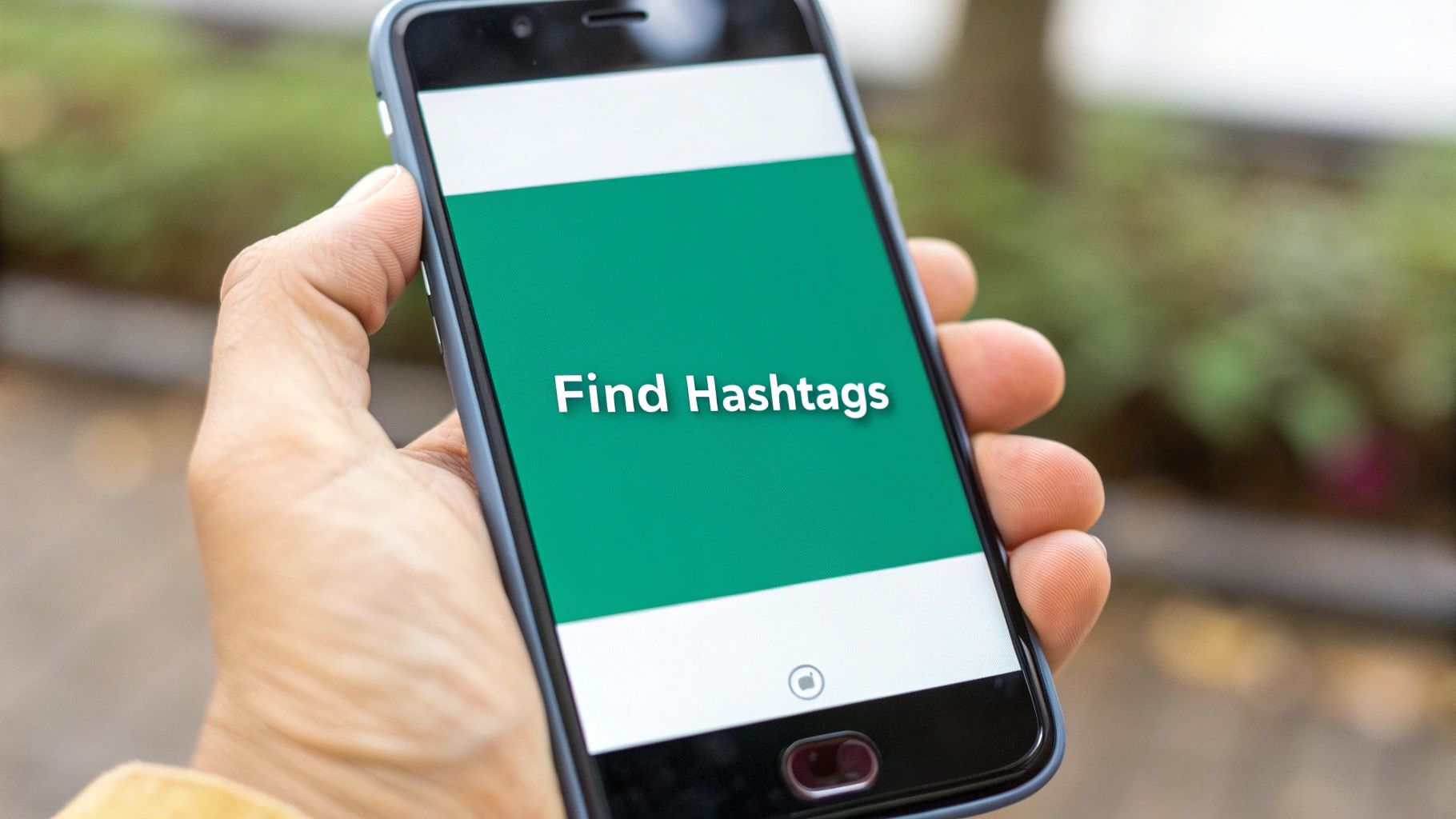
While using popular hashtags like #love or #instagood might seem like a quick route to visibility, the sheer volume of competition within these broad tags can bury your content. This means your posts might get some initial views, but they're unlikely to generate meaningful engagement or attract a loyal following. This realization has spurred a significant shift in hashtag strategy, placing greater emphasis on the power of niche hashtags.
This strategic shift recognizes that relevance now trumps popularity. Think about it: if you're searching for information about a specific type of camera, you wouldn't simply search for #photography. You'd use a more specific tag, like #sonyalpha or #canonphotography. This same principle applies to all content on Instagram. By using niche hashtags, you connect with a highly targeted audience actively seeking information related to your specific niche.
This increases the likelihood of genuine engagement, as your content directly addresses their interests.
Why Niche Hashtags Drive Deeper Engagement
Niche hashtags foster a sense of community. They connect users with shared interests, creating a more engaged and interactive audience. A post tagged #travelphotography might get lost in the noise, while a post tagged #landscapephotography or #streetphotography speaks directly to communities passionate about those subgenres.
This targeted approach strengthens your connection with your audience and solidifies your brand identity within that niche.
Additionally, niche hashtags often face less competition. This helps your content stay visible for longer, improving your chances of attracting followers genuinely interested in your niche. It's like fishing in a small, well-stocked pond instead of casting a wide net into the vast ocean—you're much more likely to catch something valuable with a focused approach.
Finding the Sweet Spot: Balancing Reach and Relevance
The trend toward niche hashtags is undeniable. The growing use of specialized tags demonstrates a clear shift from broad, popular hashtags to more targeted engagement. Popular hashtags can have hundreds of millions of uses. For instance, #reels boasts nearly 985 million uses, while #fitness and #travel have 560 million and 767 million, respectively.
Even seemingly generic tags like #summer and #fun exceed 450 million uses. This underscores the importance of finding the right balance between broad appeal and niche relevance. Find more detailed statistics here: https://www.designrush.com/agency/social-media-marketing/instagram/trends/trending-hashtags-on-instagram
This doesn't mean you should abandon broader hashtags entirely. Instead, aim for a strategic balance. Combine a few high-volume, relevant tags with a selection of highly targeted niche hashtags. This approach maximizes your reach while ensuring your content resonates with a truly interested audience.
This strategy helps you attract a larger audience while fostering deeper engagement with those genuinely interested in your content.
Crafting Your Perfect Hashtag Mix for Maximum Reach
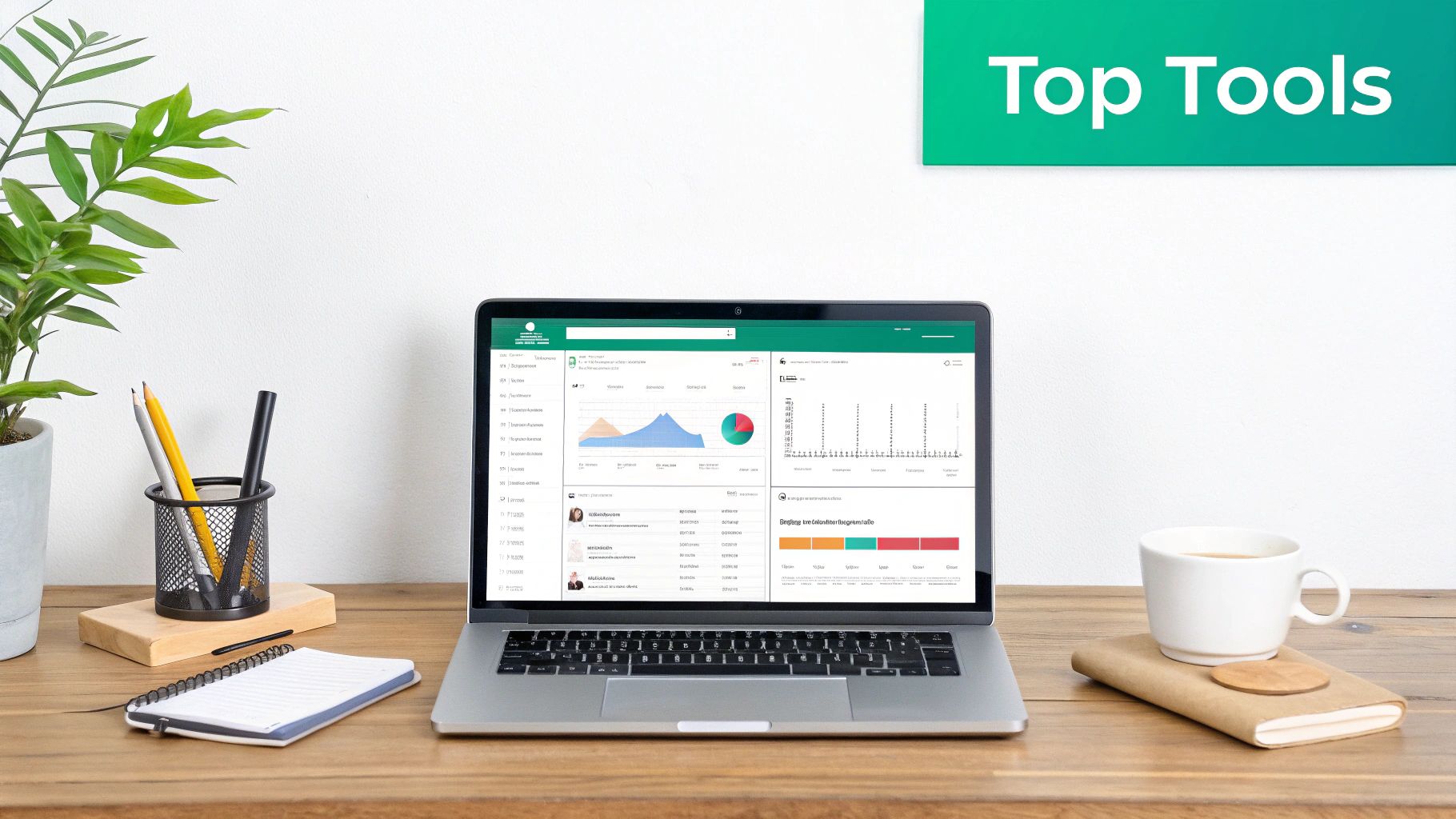
A winning Instagram hashtag strategy isn't just about chasing trends. It's about crafting a balanced mix that resonates with your audience and achieves your objectives. This means strategically blending different hashtag types to amplify your reach and boost engagement. Just like a chef combines ingredients, you need the right hashtag recipe for Instagram success.
Understanding the Three Key Hashtag Types
There are three primary hashtag categories to consider: trending hashtags, niche hashtags, and branded hashtags. Trending hashtags are currently popular, generating significant search volume and posts. Niche hashtags focus on specific communities and interests, fostering deeper connections. Branded hashtags, unique to your brand or campaign, cultivate brand awareness and community building.
For example, a fitness influencer might use #fitness (trending), #yogaflow (niche), and #FitWith[YourBrandName] (branded). This approach casts a wide net with trending tags, targets specific interests with niche tags, and builds brand loyalty with branded tags. Each type plays a vital role in your overall strategy.
Building Your Hashtag Library
Staying organized is key to efficient hashtag management. A hashtag library, a categorized list of relevant hashtags, streamlines the process of choosing the right tags for each post. Think of it as your personal hashtag toolbox, ready for any content you create. Organize your library by categories that align with your content pillars. This saves time and ensures consistency across your posts.
For a more in-depth understanding of hashtag strategies, check out the Ultimate Hashtags Guide. It’s packed with valuable insights and best practices.
The Optimal Hashtag Mix
The ideal blend depends on your goals and audience. Generally, using all three types is a solid starting point. However, the proportions should shift based on your account size.
Small accounts (under 10k followers): Prioritize niche and branded hashtags to build a dedicated community. Use trending hashtags sparingly, focusing on relevance over sheer popularity.
Medium accounts (10k-100k followers): Aim for a balance of all three, gradually incorporating more trending hashtags as your reach grows.
Large accounts (100k+ followers): While all three remain valuable, trending hashtags become crucial for maintaining visibility and attracting new followers.
To illustrate this further, let's look at the following list:
Optimal Hashtag Mix by Account Size
This list shows the recommended distribution of trending, niche, and branded hashtags based on account follower count.
Under 10k followers: Use 1-3 trending hashtags, 5-7 niche hashtags, and 3-5 branded/unique hashtags, keeping the total between 10-15 hashtags per post.
10k - 100k followers: Opt for 3-5 trending hashtags, 5-7 niche hashtags, and 2-4 branded/unique hashtags, maintaining a total of 10-15 hashtags per post.
100k+ followers: Prioritize 5-7 trending hashtags, 4-6 niche hashtags, and 1-3 branded/unique hashtags, sticking to the 10-15 total hashtag range.
As you can see, the focus shifts towards trending hashtags as the account grows, but maintaining a mix of all three types remains beneficial.
Even with ongoing discussions about their impact, hashtags are still vital for Instagram marketing in 2025. They’re key for increasing post engagement and reach. Research shows that while trending hashtags can bring in a broader audience, the best strategies involve understanding your target audience and using a combination of trending, niche, and branded tags. For more insights, visit: https://metricool.com/hashtags-on-instagram/
Testing and Adapting Your Strategy
Hashtag strategies aren't set in stone. They require consistent monitoring and refinement. Regularly analyze your hashtag performance using Instagram Insights and adapt based on the data. Look for patterns and identify the hashtags consistently driving engagement. This allows you to optimize your mix for maximum impact.
Also, watch for signs that your strategy needs a refresh. A sudden dip in reach or engagement could indicate your hashtags are no longer relevant or effective. Be ready to adjust as trends change and user behavior evolves. This ongoing optimization will ensure your hashtags continue to deliver results.
Essential Tools for Tracking Instagram Hashtag Trends
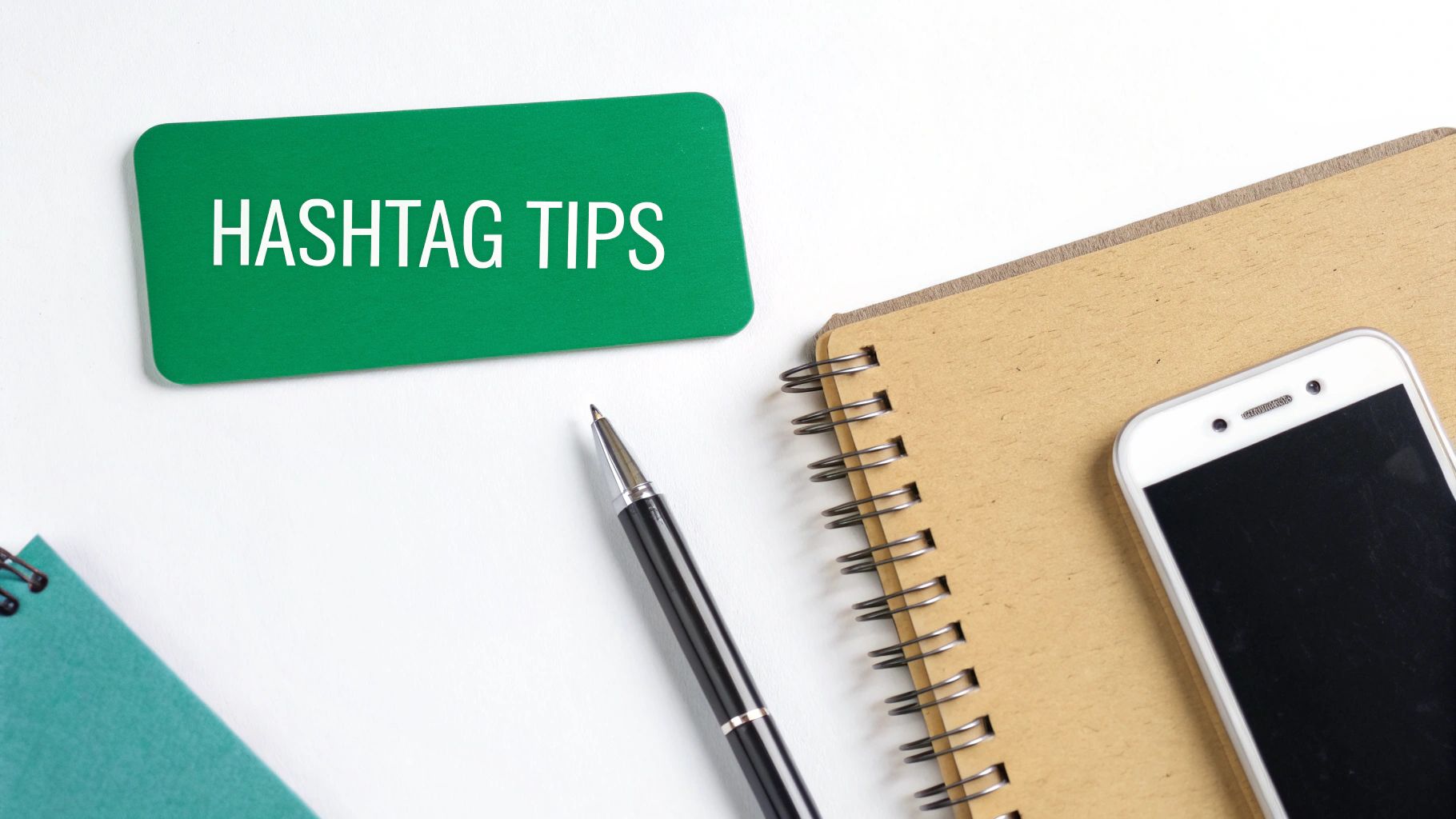
Finding trending hashtags on Instagram is a continuous process. Staying on top of relevant hashtags takes more than a single search. This is where hashtag tracking tools prove their worth. They offer the real-time data you need to improve your hashtag strategy and broaden your audience. There are many options available, from free utilities to paid platforms. Let’s examine some essential tools.
Free Hashtag Tracking Tools: Starting Your Search
Several free tools offer valuable hashtag research and tracking abilities. These are great starting points, particularly for individuals or small businesses working with tight budgets.
Instagram's built-in search: Instagram’s search bar offers basic insights into hashtag popularity and current use. It also recommends similar hashtags, widening your search options. This is a quick and simple way to get a feel for what’s trending.
All Hashtag: This free online tool gives hashtag suggestions based on keywords. It offers several hashtag creation methods, allowing you to explore a variety of options. This can be helpful for brainstorming and expanding your initial hashtag list.
Premium Hashtag Tracking Tools: Investing in Advanced Data
For more robust features and in-depth data, premium tools offer a significant advantage. While they require a financial investment, the return in data accuracy and strategic decision-making is often substantial.
Flick: Flick helps you uncover relevant hashtags, monitor their performance, and study competitor strategies. Its user-friendly interface provides an overview of hashtag activity, helping you identify growth opportunities.
Hashtagify: Hashtagify is a powerful tool for monitoring hashtag performance and trends. It delivers detailed analytics, including popularity scores, related hashtags, and user demographics. This lets you understand how hashtags are performing and who they are reaching.
Combining Multiple Approaches for a Complete Picture
The strongest hashtag tracking strategy often involves a combined approach. This might mean using a free tool for initial hashtag research, complemented by a premium tool for deeper analysis and competitive tracking. You could start with All Hashtag to generate initial ideas, and then refine your list and monitor performance using Flick.
Likewise, using Instagram's insights alongside data from a tool like Hashtagify creates a more complete view of hashtag performance. This integrated strategy gives a more robust understanding of how hashtags impact your reach and engagement.
Building a Streamlined Hashtag Workflow
To avoid getting lost in the data, establish a structured workflow. Schedule regular hashtag research sessions, using the tools mentioned above to uncover new trends and monitor existing ones. This keeps your hashtag strategy in sync with your overall content plan.
Continuously monitor how your selected hashtags perform. Use this information to tweak your strategy and improve your hashtag usage for maximum reach and engagement. This consistent review is critical for responding to shifting trends and maintaining a successful presence on Instagram. These techniques will help you transition hashtag research from a potentially overwhelming task into a streamlined process.
Avoiding Critical Hashtag Mistakes That Limit Your Reach
Even with a well-defined hashtag strategy, common mistakes can hinder your Instagram growth. These errors can subtly impact your visibility and engagement, making it challenging to connect with your target audience. Let’s explore some critical hashtag mistakes and how to avoid them.
The Pitfalls of Hashtag Repetition
Using the same set of hashtags might seem like a time-saver, but repeating the same group for every post can penalize your reach. Instagram might interpret this as spam, similar to sending the same email repeatedly. This can land your content in the metaphorical "spam folder" of Instagram, limiting its visibility. Instead, diversify your hashtags to keep your content fresh and engaging.
Identifying Shadowbanned or Flagged Hashtags
Some hashtags are shadowbanned or flagged due to misuse or inappropriate content. Using these can severely restrict your reach, as your content won't appear in search results. Think of it like using a broken compass – you won't reach your destination. Before using a hashtag, search for it on Instagram. If you see limited or no recent posts, that’s a warning sign.
Prioritizing Context Over Volume
Don't fall into the trap of stuffing your posts with irrelevant trending hashtags. While it might seem like a quick win, using hashtags unrelated to your content can backfire. Instagram prioritizes relevance, so using unrelated tags can signal that your post isn't valuable to users searching for those specific topics. This can negatively impact your reach and engagement. Focus on quality over quantity.
Recovering From Hashtag Mistakes
If you've made these mistakes, don't worry – you can recover. Diversify your hashtags by creating multiple sets of relevant tags and rotating them between posts. Audit your existing hashtags and remove any that are flagged, banned, or irrelevant to your content. Most importantly, focus on creating high-quality content that naturally attracts engagement and boosts visibility.
Building a Sustainable Hashtag Strategy
The key to long-term success is building a sustainable hashtag strategy. Organize your hashtags into categories to easily choose relevant tags for each post. Regularly research new hashtags to keep your library fresh and aligned with current trends. Finally, monitor your hashtag performance to track which tags are driving the most engagement and adjust your strategy accordingly.
By avoiding these common pitfalls and developing a strategic approach, you can maximize your Instagram reach and connect with a truly engaged audience. Take control of your hashtag strategy and unlock the full potential of your Instagram content.
Ready to supercharge your Instagram growth organically? Gainsty is your AI-powered social assistant, designed to help you attract real followers and boost engagement authentically. No bots, no fake followers, just real results. Visit Gainsty today and discover the power of organic growth!
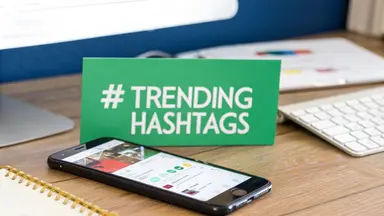
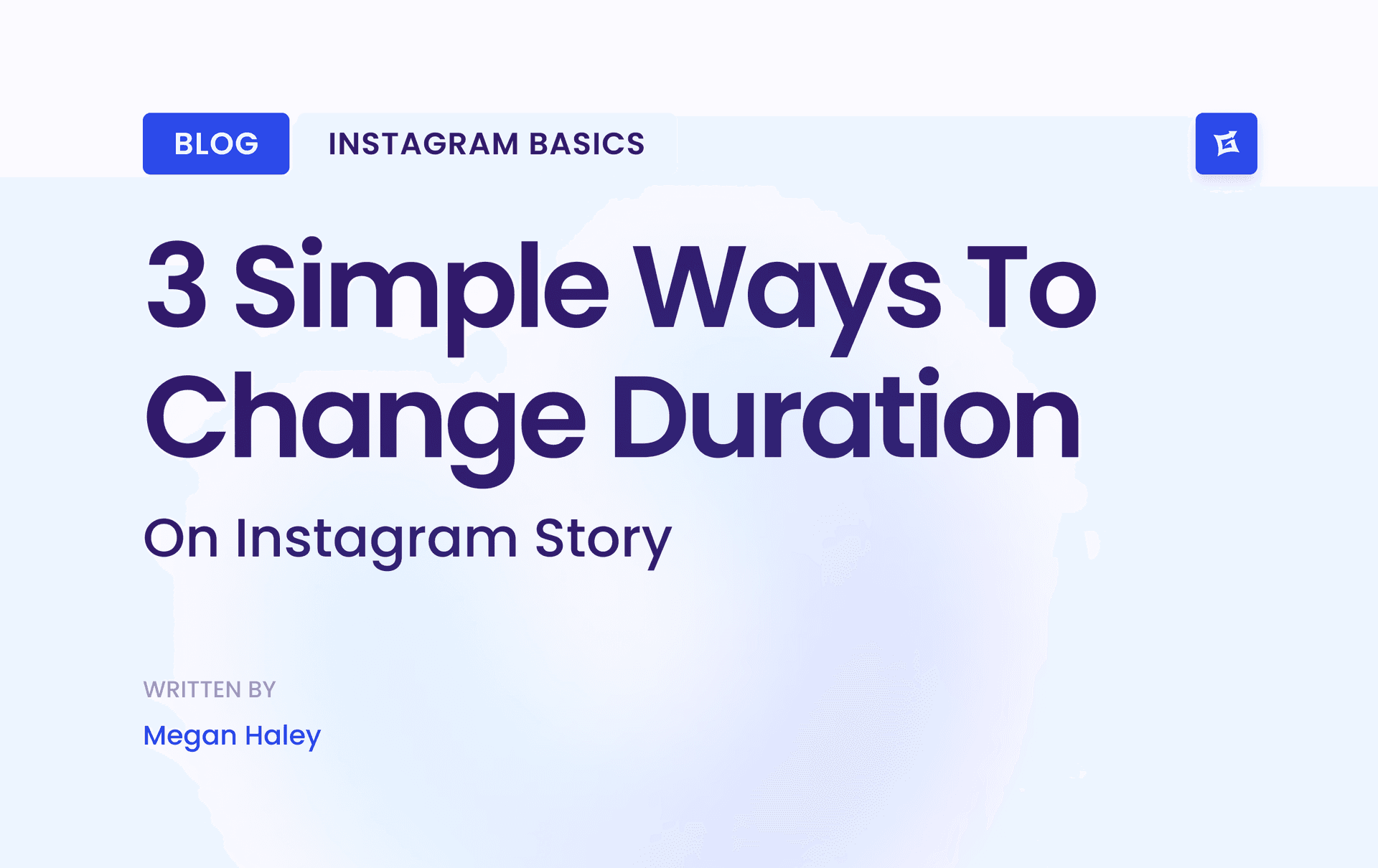
.png&w=1920&q=75&dpl=dpl_9XSWKBjhcBN6v6b1SN7m3p1WWjfr)
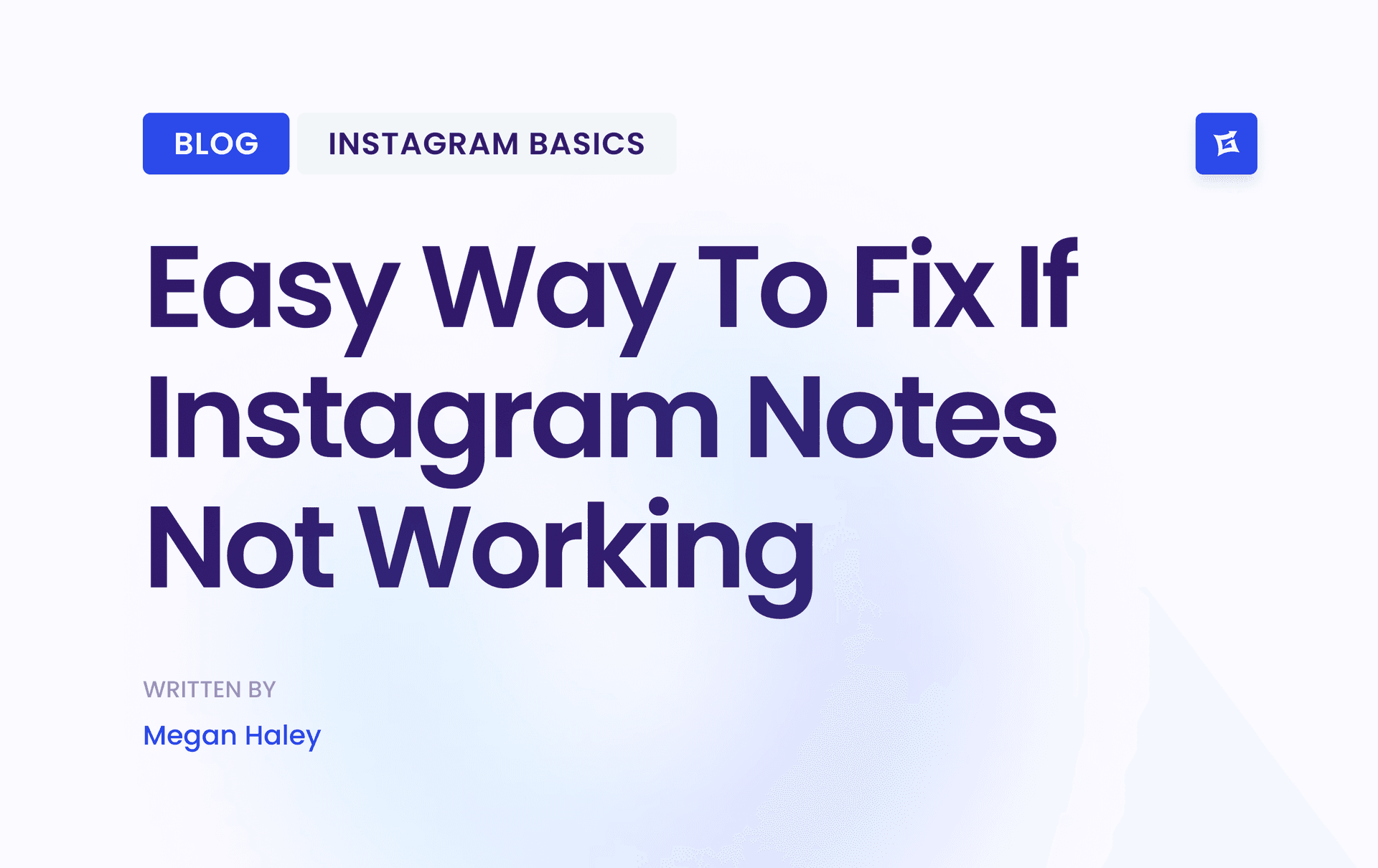
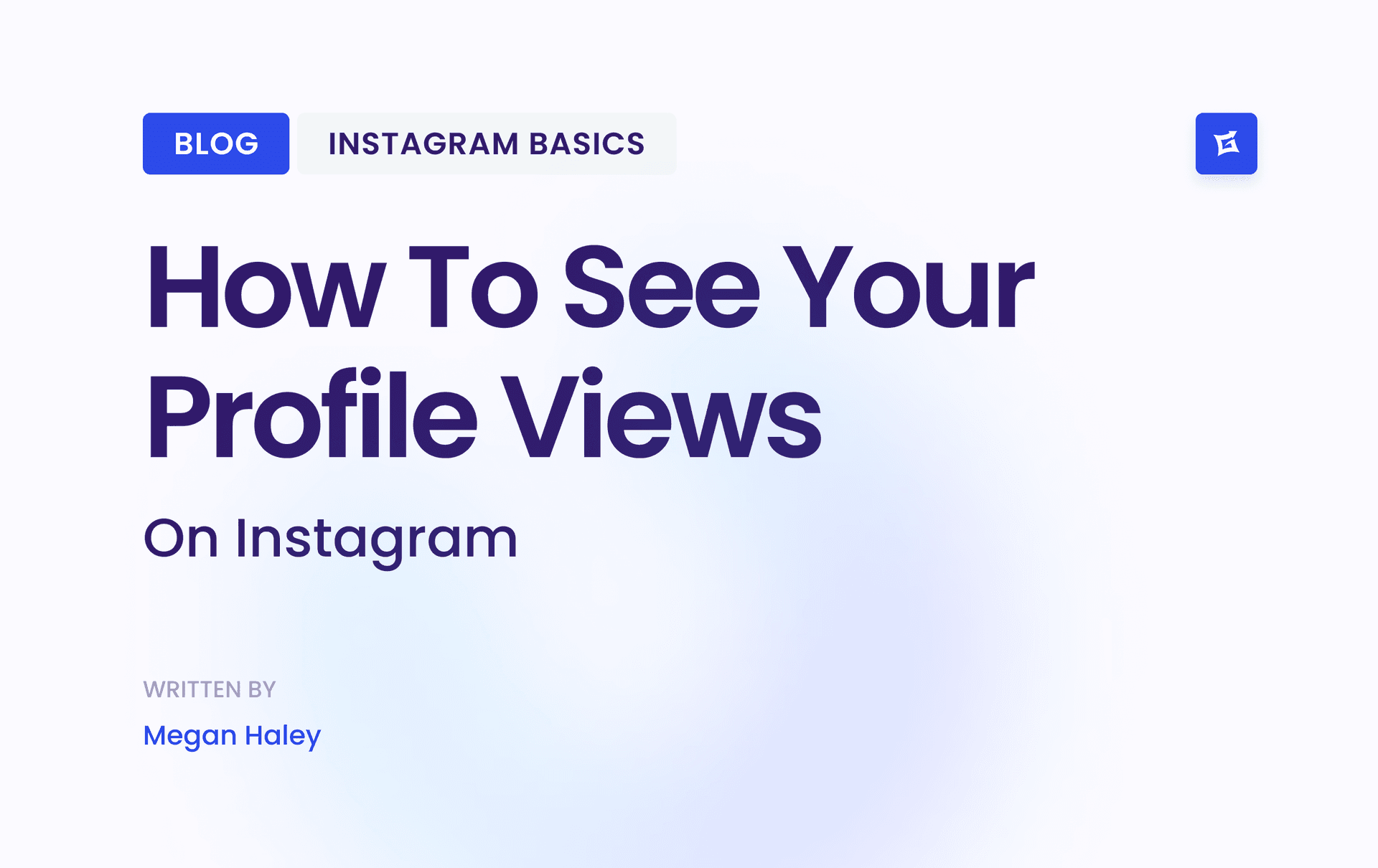
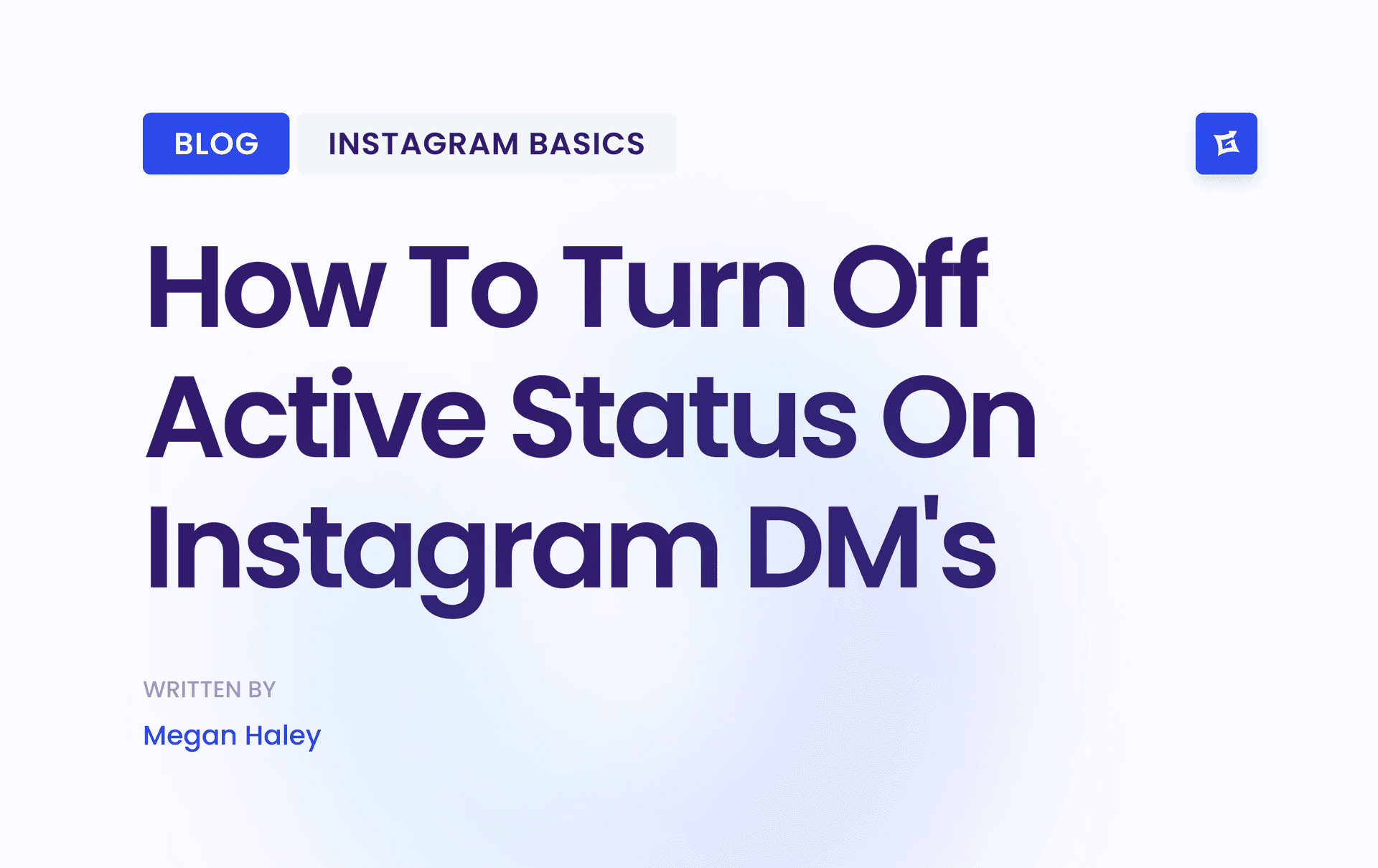
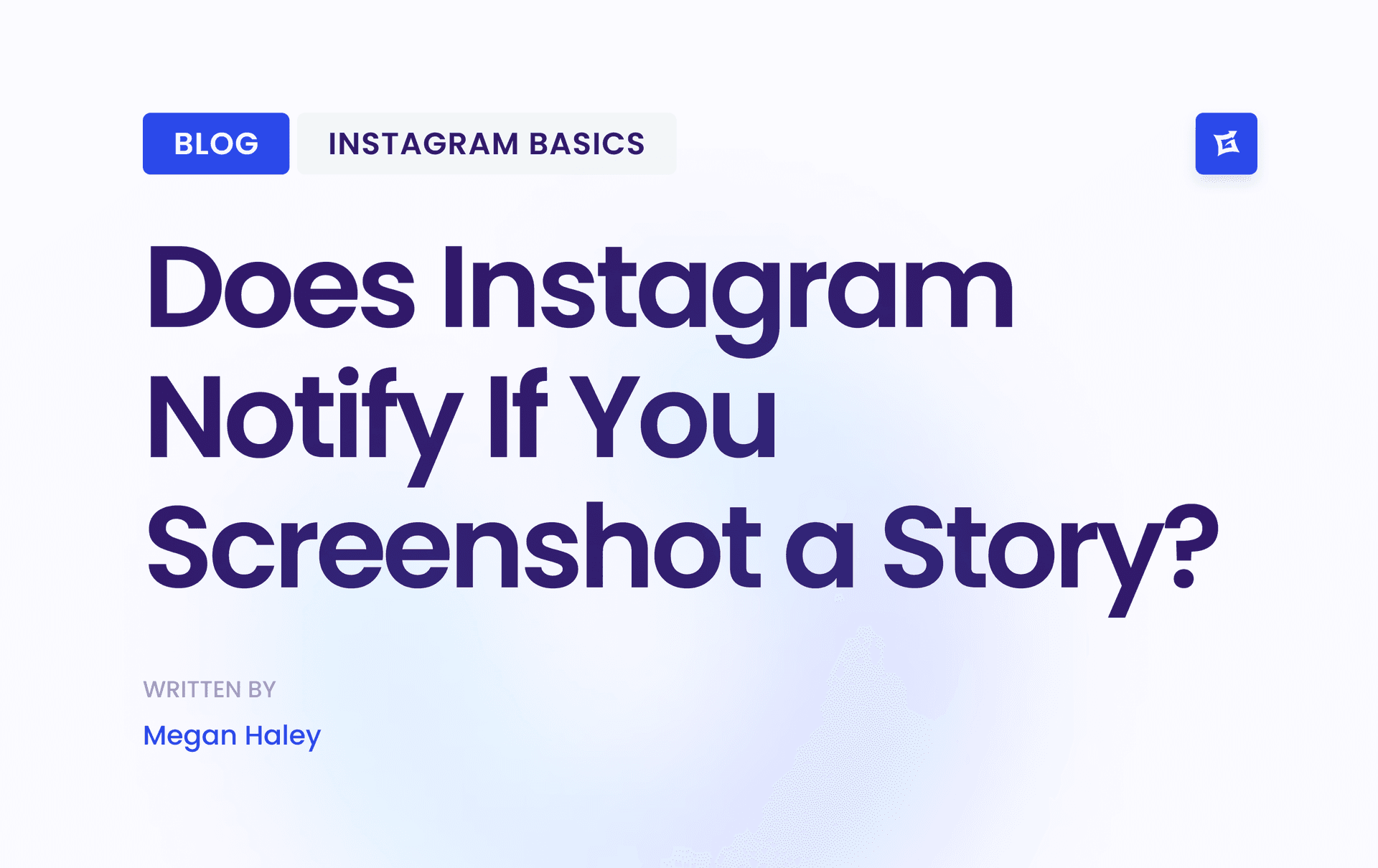



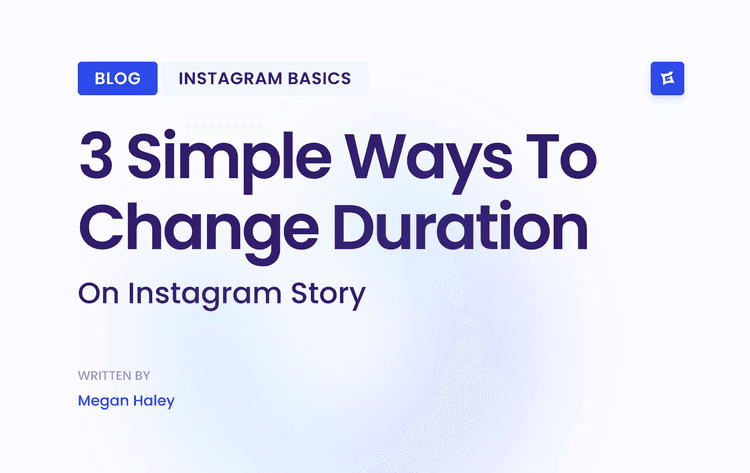
.png&w=750&q=75&dpl=dpl_9XSWKBjhcBN6v6b1SN7m3p1WWjfr)
